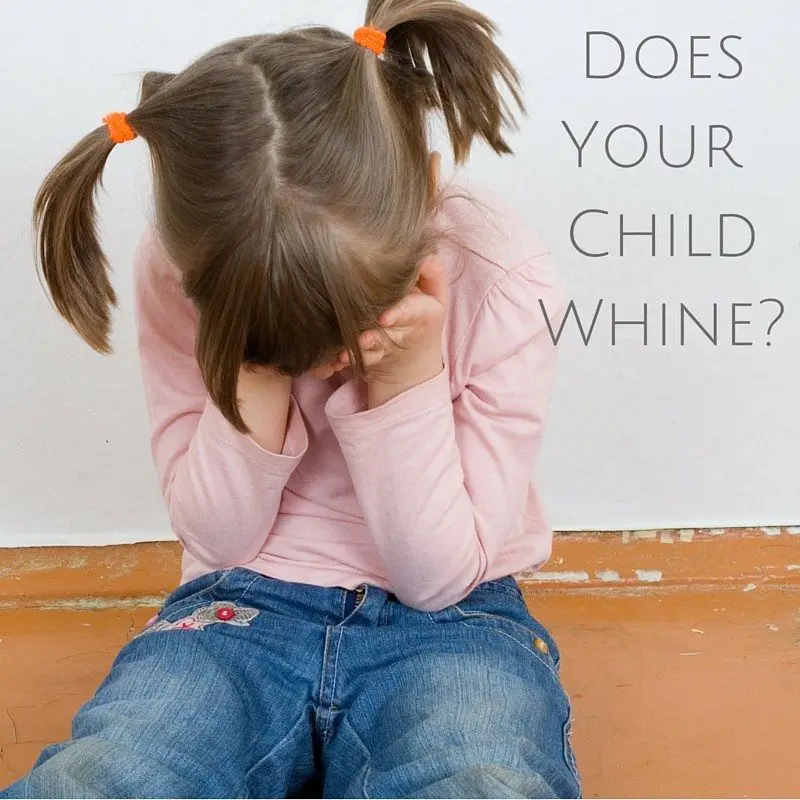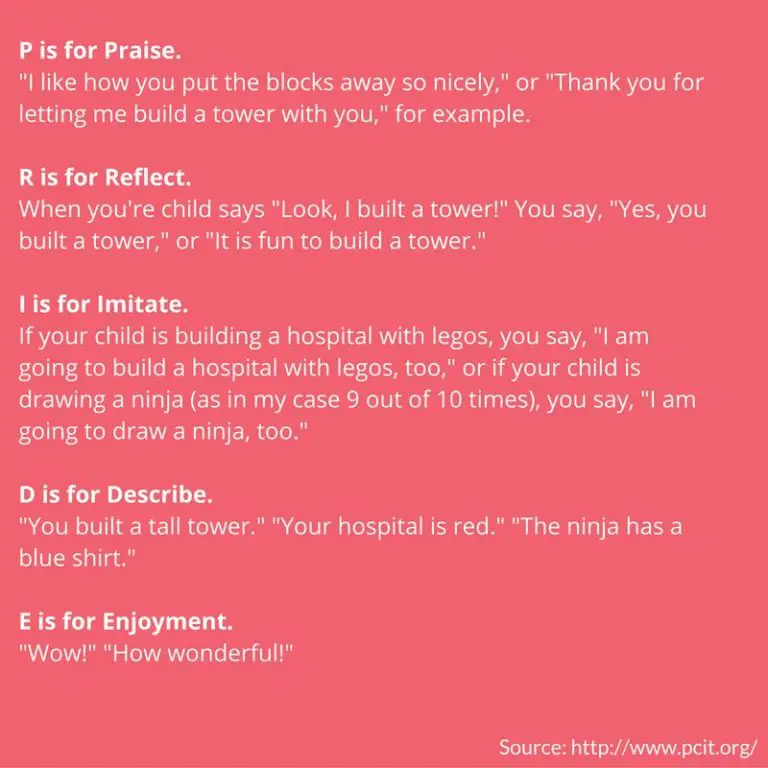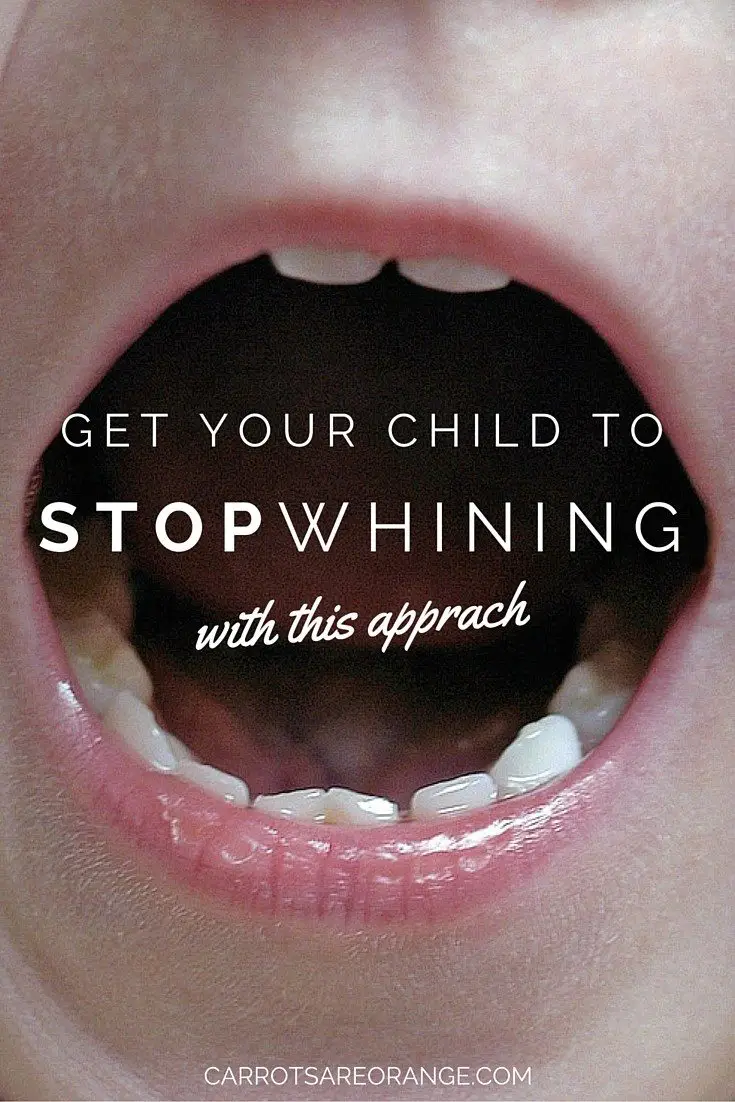Whining. Sigh. In other words, how can we stop constant whining?
Let's be honest, there isn't a word to accurately describe how the high pitched, drawn-out word flow makes my ears feel.
So, no matter if you have a 5-year-old, an 8-year-old, or a spouse whining, there is hope. I promise you.
Being a parent of challenging children gives me loads of opportunity to work on my communication skills. There is nothing more cringe-worthy – okay, maybe fingers scratching across a chalkboard – than hearing a child whine. Okay, well, maybe lots and lots of crying (how do you stop a child crying anyway?).
Is it just me?

Put an End to Constant Whining
Whining is annoying, right? My husband thinks so. For example, when I whine, he ignores me. Then, I know and I stop whining (that was a hint).
Okay, good, we are on the same page.
So, how can we get kids to stop whining? Is it possible?
How to Get Your Child to Stop Whining
Recently my family started working with Parent-Child Interaction Therapy (or PCIT). This therapy is relatively new in terms of hitting “mainstream”. The behavioral ideas developed back in the 60s. Since that time evidence has shown that PCIT works to improve the parent/child relationship and interactions.
This approach differs from other therapies in a few main ways. One difference is that the work involves parents in the process. In essence, PCIT is parent coaching combined with play and behavioral therapy. Oh, and, your child will hopefully stop whining. Fingers crossed.
To give you a visual, you are in a room playing with your child and there is a therapist behind a one-way window. She can see you but you can't see her. In addition, she places a small earpiece in your ear to direct your interactions with your child. Yes, an expert is whispering in your ear, guiding you in those challenging moments. I will post more on this therapy over the next few months as we progress through the weeks in improving my relationship with my child (part of which is to help me figure out a way to get him to stop whining).
Parent-Child Interaction Therapy – P.R.I.D.E.
Our “homework” this week is to find at least five minutes a day to have “special play time” one on one with your child not as a reward or punishment but simply as part of your day. You are to follow a PRIDE approach with your interactions. You are to ask no questions, not even “What should we play next?” or “What are you building?” Avoid saying words like: “Don't”, “No”, “Stop” and focus on “physical positives” such as eye contact, smiles, hugs, sitting closely, and so on.

During your “special play time”, follow the PRIDE guideline:
P is for Praise. I don't mean to say “great job!” but instead to comment on the child's behavior. “I like how you put the blocks away so nicely,” or “Thank you for letting me build a tower with you,” for example.
R is for Reflect. When you're child says “Look, I built a tower!” You say, “Yes, you built a tower,” or “It is fun to build a tower.”
I is for Imitate. If your child is building a hospital with legos, you say, “I am going to build a hospital with legos, too,” or if your child is drawing a ninja (as in my case 9 out of 10 times), you say, “I am going to draw a ninja, too.”
D is for Describe. “You built a tall tower.” “Your hospital is red.” “The ninja has a blue shirt.”
E is for Enjoyment. “Wow!” “How wonderful!”
Parent-Child Interaction Therapy – Selective Attention / Active Ignore
The other piece of our homework is to practice “Selective Attention” or Active Ignore when a child exhibits minor irritating, annoying, or inappropriate behavior. The key to being successful with this approach is to let the child know ahead of time that you will ignore the child when this behavior occurs.
7 Simple Ways to Actively Ignore a Child's Constant Whining
- Walk away.
- Be silent.
- Turn your eyes away.
- Blank facial expression.
- Compliment another child “thank you for putting the toys away so nicely, Joe.”
- Broadcast your behavior “I am putting the play dough away so it doesn't dry out.”
- Play with another toy and have a lot of fun doing it!
This part is challenging for me. I often respond when my child whines with a “you really want another cookie.” In other words, I acknowledge and validate the emotion. Furthermore, I still do that but I wait for a calm moment – after my child stops whining – to not only compliment him on calming his body down or using a kind tone but also to address his need. To be clear, this approach is a work in progress but with time and practice, I feel confident that this cringe-worthy behavior will disappear. Here is a great link to PCIT resources from UC Davis.

